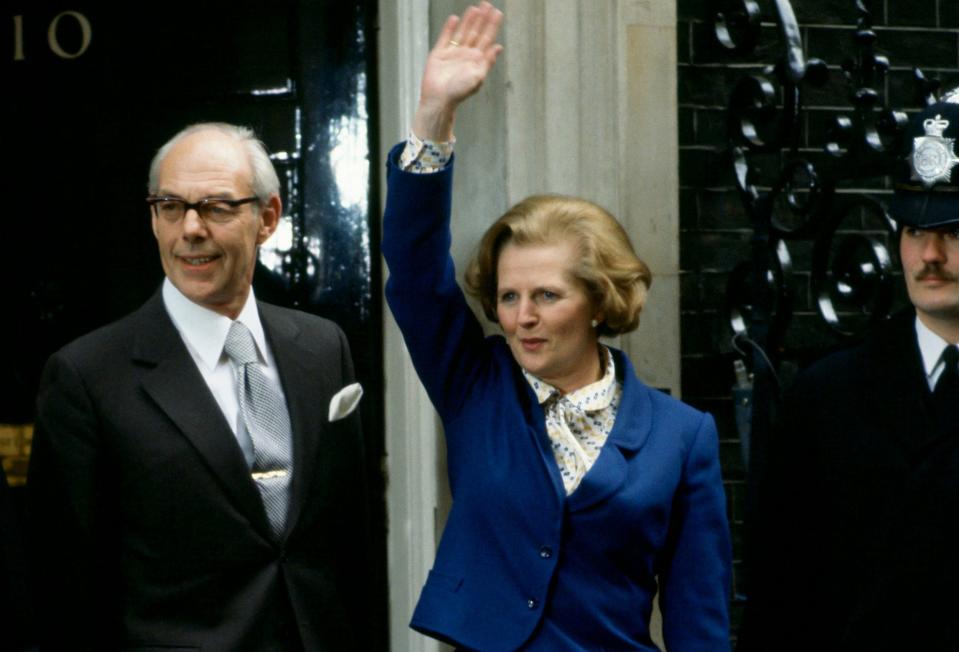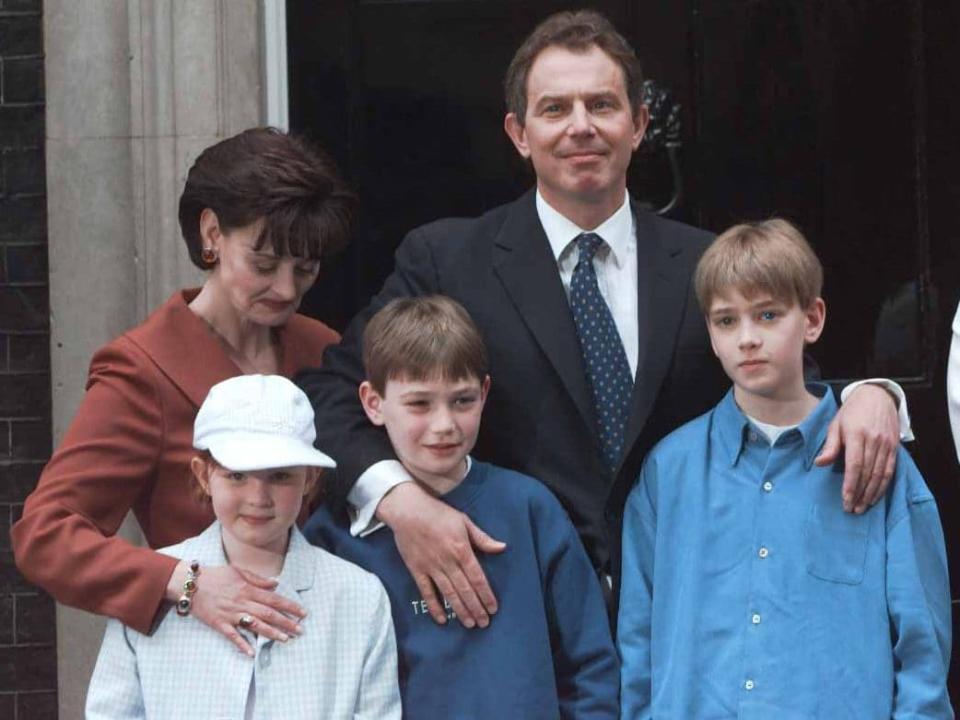Will the Starmers be the first prime ministerial family since the Wilsons not to live in Downing Street?

- Oops!Something went wrong.Please try again later.
- Oops!Something went wrong.Please try again later.
The move to Downing Street is a symbolic moment for any incoming prime minister, the most obvious proof of your drastically changed situation. You do not merely run the shop, as Mrs Thatcher said, you live above it. Downing Street is one of the most prestigious political residences on Earth, perhaps second only to the White House. For five years, barring calamity, it is yours, for you to decorate with all the golden Lulu Lytle wallpaper you like.
Of all the recent prime ministers, however, Sir Keir Starmer might have the most reason to be wary of the move. For all the benefits of being in the flat above Number 10 Downing St – or the larger flat above Number 11, which recent prime ministers have preferred, starting with Tony Blair – there are also disadvantages.
Although spacious and comfortable, the flats are still flats, with the usual constraints. While the PM can redecorate the place to taste, they cannot personalise it as much as they would their own home. There is a lovely garden, but you are overlooked, as Boris Johnson discovered when photos of his lockdown parties, taken from above, were released.
Starmer is the first prime minister for decades to have a London constituency, so his family are not used to a regular shuffle in and out of town. His current home in Kentish Town is near his football team, Arsenal and his favourite pub, The Pineapple. His wife, Victoria, works in occupational health for the NHS, and, at present, can walk to work. The couple have two teenage children, who can walk to school. Moving to Downing Street means disrupting a happy, settled routine.

Still, there are good reasons to live there. The first is security. Anywhere the Prime Minister spends the night must have a round-the-clock police presence. Paradoxically, this means Downing Street, where security is well established, can give the occupants more freedom. “There’s a police cordon, within which you get a certain amount of freedom,” says Paul Harrison, Theresa May’s former press secretary. “The same’s true at Chequers, there’s a perimeter so you can walk around without someone on your shoulder all the time. Elsewhere, certainly for the PM, that won’t be true any more.”
There are also situations when it is easier for the staff to have the prime minister close at hand. In a podcast last year, Guto Harri, Boris Johnson’s former director of communications, recalled the prime minister being woken at 3am for a call with President Zelensky as Putin’s tanks rolled into Ukraine.
“There will be times when he will be called upon at a moment’s notice for a briefing, to take an emergency meeting, to be woken up in the night because of a developing security situation, and it’s just practically easier to be above the shop,” Harrison adds. “That has an advantage for number 10 staff as much as it does for the PM. It cuts down on travel time on what will already be an incredibly congested day. Keir will have felt in opposition that he was a busy guy, but people will now be fighting over five minutes of his diary time.”
Other prime ministers have used the flat as an extension of the office. Margaret Thatcher would regularly have late-night meetings in there, kicking off her high heels and pouring herself a whisky, and interrupting conversations with MPs to check on the peas.

Rishi Sunak, on the other hand, confessed to breaking off his work day to go upstairs to remake the bed. In a joint interview for Grazia magazine with his wife Akshata, he said to her: “You also just don’t like making the bed. It bugs me, so I actually sometimes come up back into the flat from the office after we’ve all left to make the bed because I’ll be irritated if it’s not made.”
Children are another concern. The Starmers are unusual among recent prime ministerial families in having teenage children, who will be living their own lives. A flat laid out on one floor, however spacious, is less private than a house, where adolescents can mope on a different floor and have their own bathrooms. And the cachet of being able to invite friends back to Downing Street will be mitigated by the constant scrutiny of staff, security and paparazzi. All visitors are recorded in a log book. The Starmers have been scrupulous about the privacy of their children, but that may be more difficult to maintain when they are living in Downing Street. The Blairs learnt the dangers of having teenage children during Downing St, when their 16-year-old son Euan was picked up by special branch for being drunk in Leicester Square.

If the Starmers choose not to live at Number 10, or at least not to live there full time, they will be in good historical company. “There is no reason at all that the Prime Minister has to live above Downing Street,” says Anthony Seldon, biographer of seven prime ministers and author of two books about Number 10 Downing Street. Lord Salisbury preferred his estate at Hatfield; Harold Wilson lived round the corner in Lord North Street. Theresa May preferred long weekends at her constituency home in Maidenhead. When George Osborne became chancellor in 2010, he and his family initially remained at their home in Notting Hill, after his then-wife Frances reportedly “took one look at the cramped quarters on offer above No 10 and said no thanks”.
“I don’t believe it will make any difference to his authority in office if he lives elsewhere,” Seldon adds. “If they’re both more comfortable elsewhere, they should do that. He should also be strongly encouraged to spend not just Friday evenings but more time also with his family. No prime minister in history has suffered from spending too much time with their family, and plenty [have] suffered from being frazzled by not doing so.”
The Starmers will not know how life in Downing Street suits them until they try it. Seldon says premiers with a sense of history have often liked it best. “Churchill liked the romance of being in it, Clementine less so,” he says. “Attlee and Violet liked it there. The more historically minded prime ministers. It’s not bad. You’re bang in the middle of London. It’s a wonderful town flat, with great views.”
Ultimately, Osborne did move to SW1. However the Starmers arrange their lives, they will be subject to an even stronger pull. “Don’t underestimate the gravitational pull of government, the civil service, his private office,” says Paul Harrison. “Nobody will tell him where to live, but there will be pressure. The path of least resistance will be spending at least part of the week in number 10, because that’s how the system is set up. In lots of ways, it’s just easier.”

